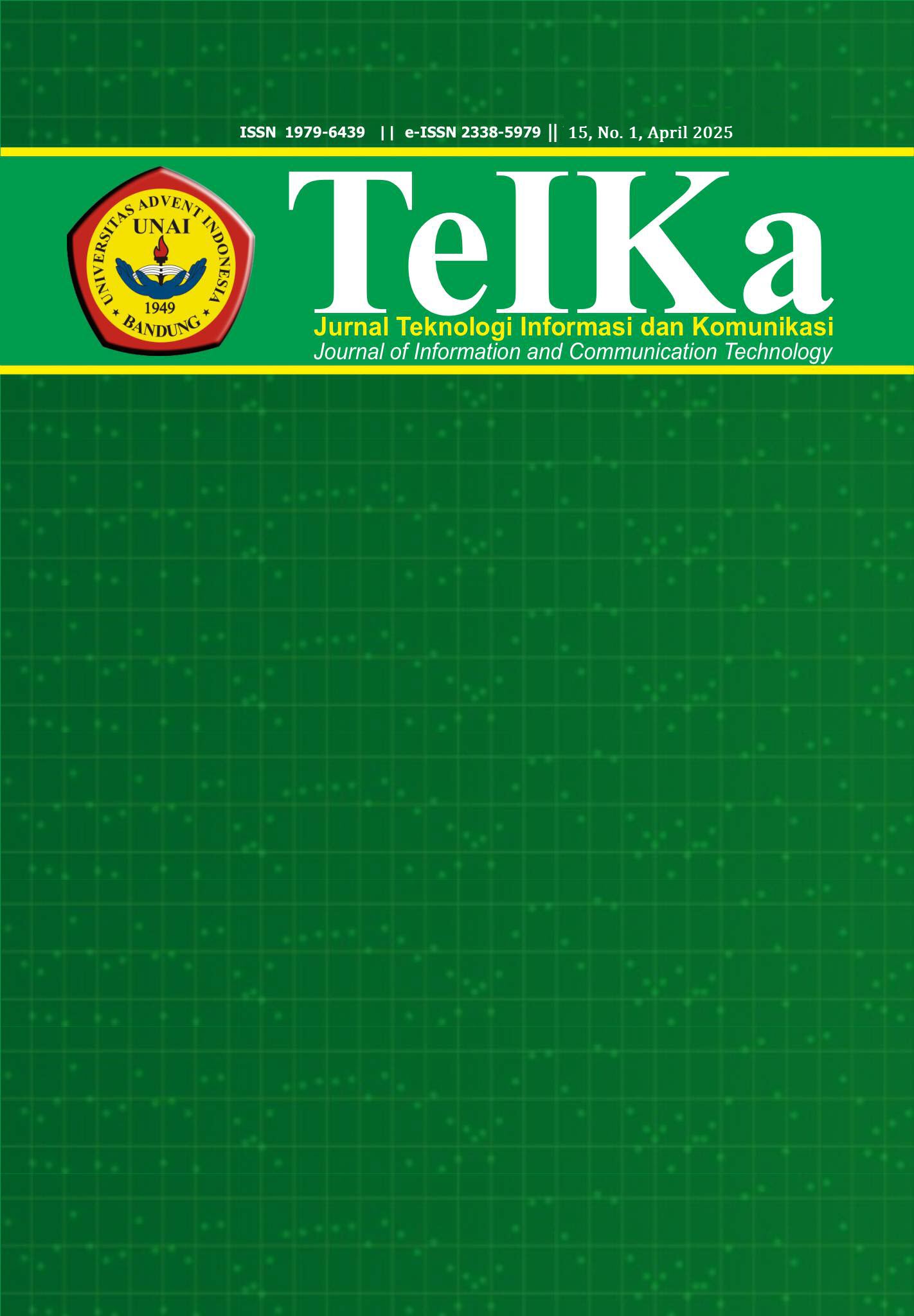Prototype IoT-Based Gas Leak Detection & Measuring Device
Keywords:
IoT, MQ2 Sensor, NodeMCU, TelegramAbstract
The widespread use of LPG gas in households and industries poses a leakage risk that can potentially cause fires. This study aims to develop a prototype of an IoT-based gas leakage detection and measurement device, enabling remote monitoring via the Telegram application. The research methodology includes needs analysis, hardware and software design, system implementation, testing, and evaluation. The results indicate that the developed system, utilizing the MQ2 sensor and NodeMCU, can accurately detect gas leaks and send real-time notifications to users. This system provides an effective early warning, enhances user safety, and overcomes the limitations of the human sense of smell in detecting gas leaks.
Downloads
References
M. Alparisi, “PERANCANGAN SISTEM KEAMANAN BERKAS BERBASIS IoT MENGGUNAKAN FINGERPRINT DENGAN NOTIFIKASI VIA TELEGRAM,” INFOKOM (Informatika & Komputer), vol. 9, no. 1, pp. 46–56, 2021, doi: 10.56689/infokom.v9i1.480.
R. Andriawan, D. Berliani, Y. Sarigih, and U. Latifa, “Rancangan Bangun Sistem Pendeteksi Kebocoran Gas LPG Menggunakan Nodemcu ESP866 Berbasis Internet,” Sci. Phys. Educ. J., vol. 6, no. 1, pp. 33–41, 2022, doi: 10.31539/spej.v6i1.4394.
G. Sanhaji, I. Pratama Putra, and I. Abdul Rojak, “Rancang Bangun Sistem Monitoring Kebocoran Gas, Suhu, dan Kelembapan pada Dapur Berbasis Internet of Things Menggunakan Mikrokontroler Wemos D1 Mini,” Ranah Res. J. Multidiscip. Res. Dev., vol. 5, no. 4, pp. 335–343, 2023, doi: 10.38035/rrj.v5i4.785.
F. Benfano Soewito, “Deteksi kebocoran gas LPG dengan sensor MQ (based IOT),” 2020. https://mti.binus.ac.id/2020/09/03/deteksi-kebocoran-gas-lpg-dengan-sensor-mq-based-iot/ (accessed Jun. 28, 2024).
K. E. S. D. M. Dan, “Konversi Minyak Tanah ke LPG : Menggerakkan Perekonomian, Menghemat Energi,” 2010. https://esdm.go.id/id/media-center/arsip-berita/konversi-minyak-tanah-ke-lpg-menggerakkan-perekonomian-menghemat-energi (accessed Jun. 27, 2024).
M. A. Prasetyo and N. Paramytha, “Pengembangan Sistem Pendeteksi Kebocoran Gas LPG dengan Teknologi IoT dan Sensor MQ5,” J. Ampere, vol. 8, no. 2, pp. 103–115, 2023, doi: 10.31851/ampere.v8i2.9240.
Indobot, “Datasheet NodeMCU ESP8266 Lengkap,” 2022. https://blog.indobot.co.id/datasheet-nodemcu-esp8266-lengkap-dengan-pin-dan-cara-akses/ (accessed Jun. 28, 2024).
A. D. Kurniawan, “Design and Implementation of Home Security Using Telegram Botfather,” Fidel. J. Tek. Elektro, vol. 2, no. No. 1, pp. 11–15, 2020, doi: 10.52005/fidelity.v2i1.105.
I. Panji Aryan and C. Bella, “Rancangan Alat Deteksi Kebocoran Gas Berbasis Android Menggunakan Sensor Mq-2,” Portaldata.org, vol. 1, no. 3, pp. 2021–2022, 2021.
E. Soesilo and I. Fayuza, “Prototype Alat Pendeteksi Kebocoran Gas LPG Berbasis IOT,” J. Tek. Ind. Terintegrasi, vol. 6, no. 3, pp. 862–879, 2023, doi: 10.31004/jutin.v6i3.17664.
E. A. Prastyo, “Review Sensor Gas MQ-2: Deteksi Gas dengan Arduino,” 2024. https://www.arduinoindonesia.id/2024/06/review-sensor-gas-mq-2-deteksi-gas-dengan-arduino.html (accessed Mar. 25, 2025).
R. Harahap, “10 Resiko Usaha Gas Elpiji yang Harus Diketahui,” 2021. https://www.kosngosan.com/2021/12/resiko-usaha-gas-elpiji.html (accessed Jun. 28, 2024).
Indobot, “Apa itu LCD dalam Elektronika?,” 2023. https://blog.indobot.co.id/apa-itu-lcd-dalam-elektronika/ (accessed Jun. 18, 2024).
E. A. Prastyo, “Pengertian dan Penjelasan tentang Piezoelectric Buzzer,” 2023. https://www.edukasielektronika.com/2022/10/pengertian-dan-penjelasan-tentang.html (accessed Mar. 25, 2025).
Downloads
Published
How to Cite
Issue
Section
License
Copyright (c) 2025 TeIKa

This work is licensed under a Creative Commons Attribution-ShareAlike 4.0 International License.
The submitting author warrants that the submission is original and that she/he is the author of the submission together with the named co-authors; to the extend the submission incorporates text passages, figures, data or other material from the work of others, the submitting author has obtained any necessary permission.
Articles in this journal are published under the Creative Commons Share Alike Attribution Licence (CC-BY-SA What does this mean?). This is to get more legal certainty about what readers can do with published articles, and thus a wider dissemination and archiving, which in turn makes publishing with this journal more valuable for you, the authors.
By submitting an article the author grants to this journal the non-exclusive right to publish it. The author retains the copyright and the publishing rights for his article without any restrictions.









